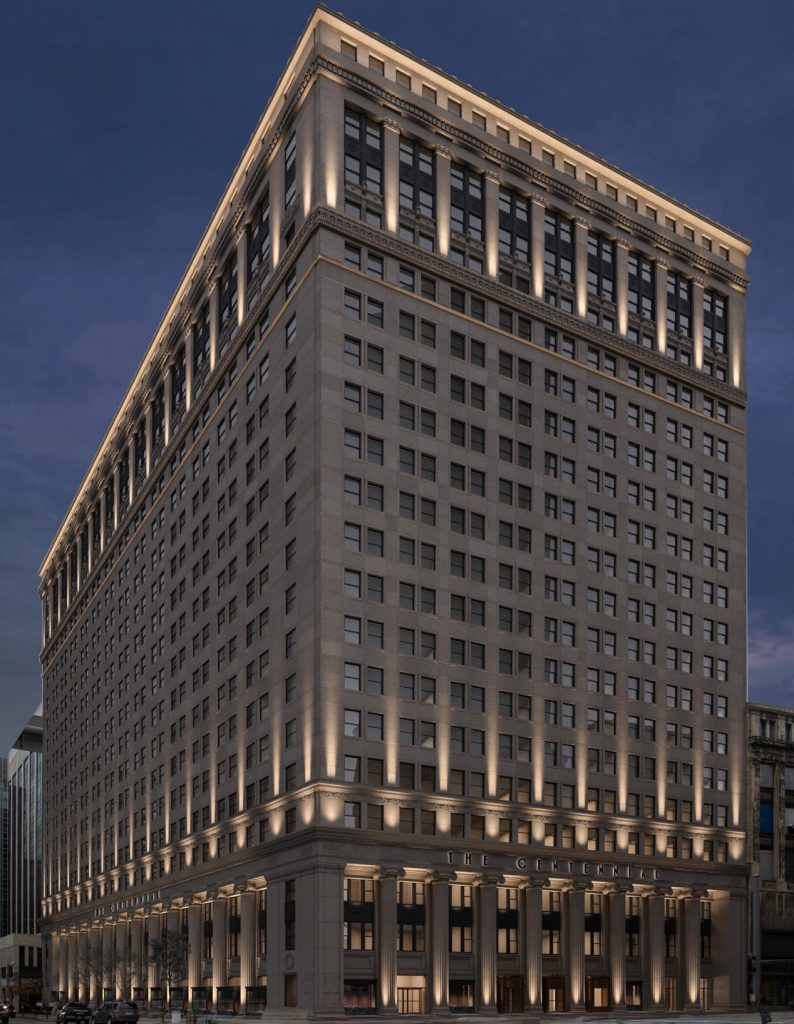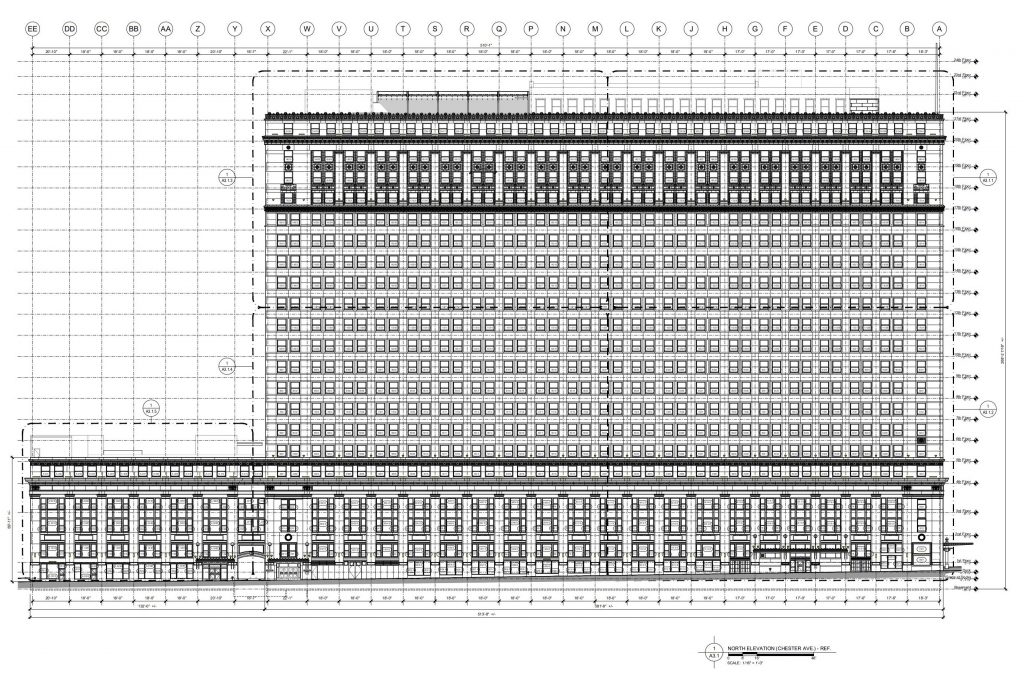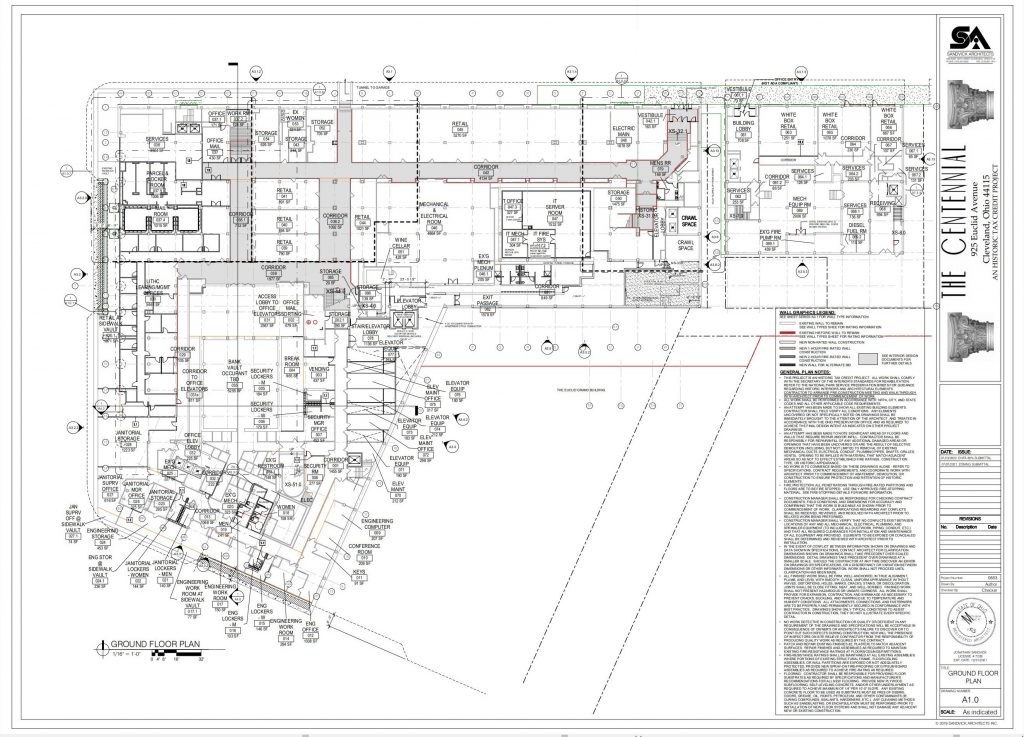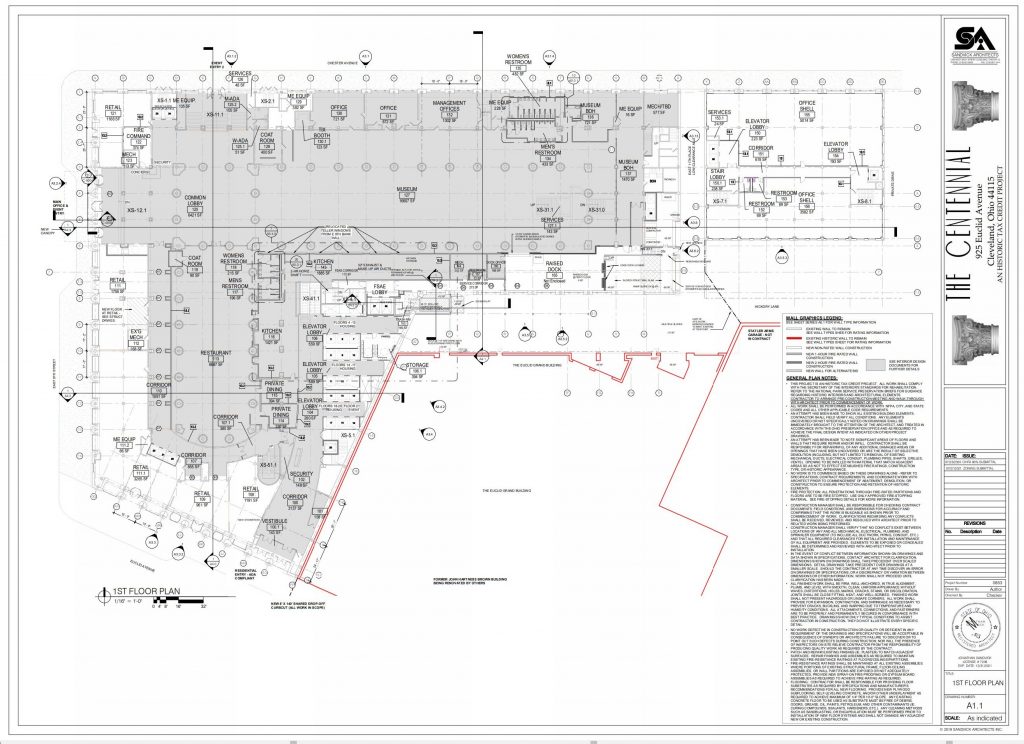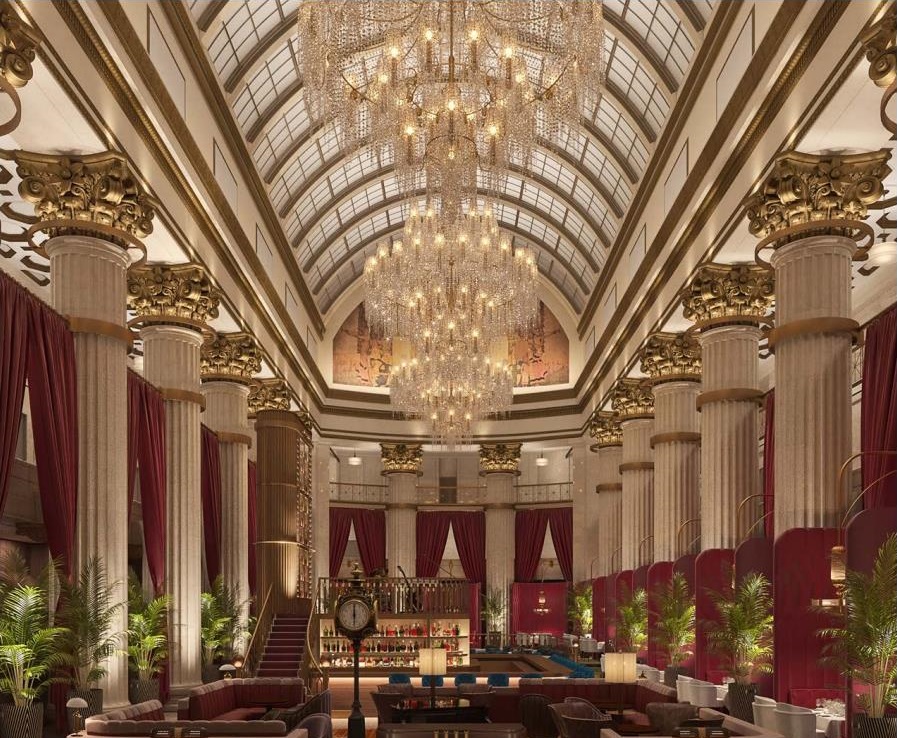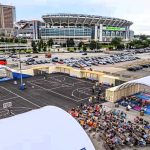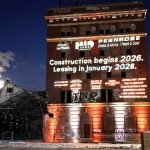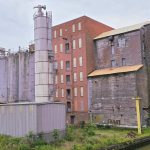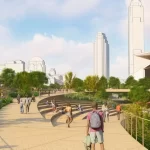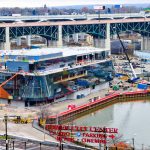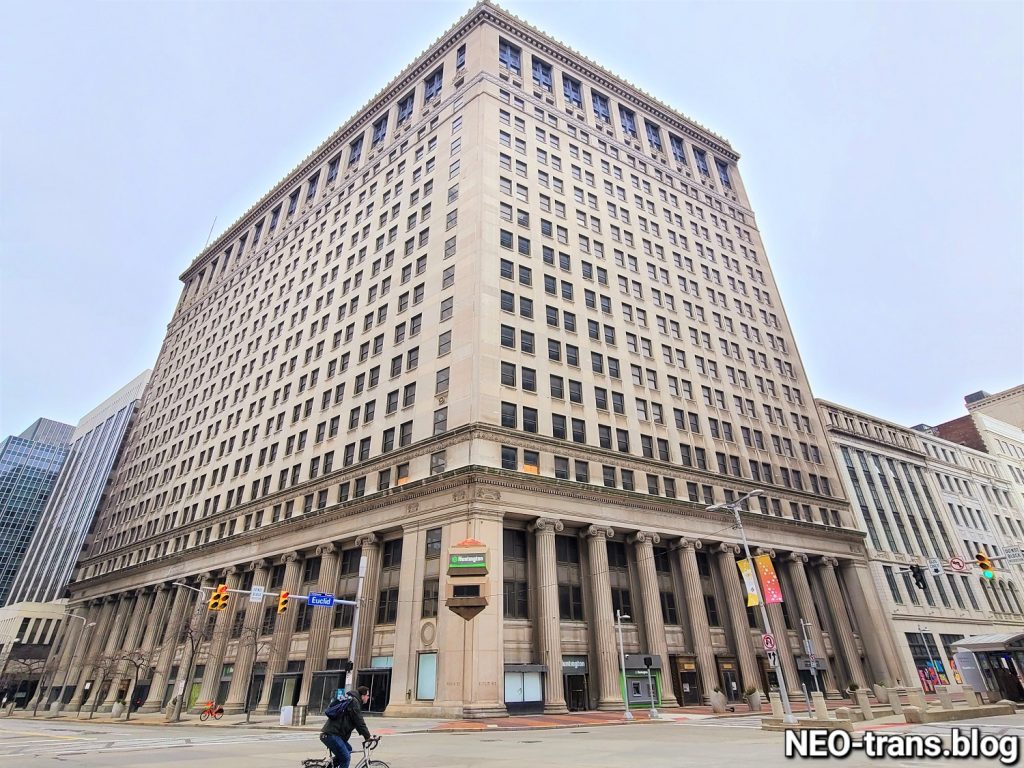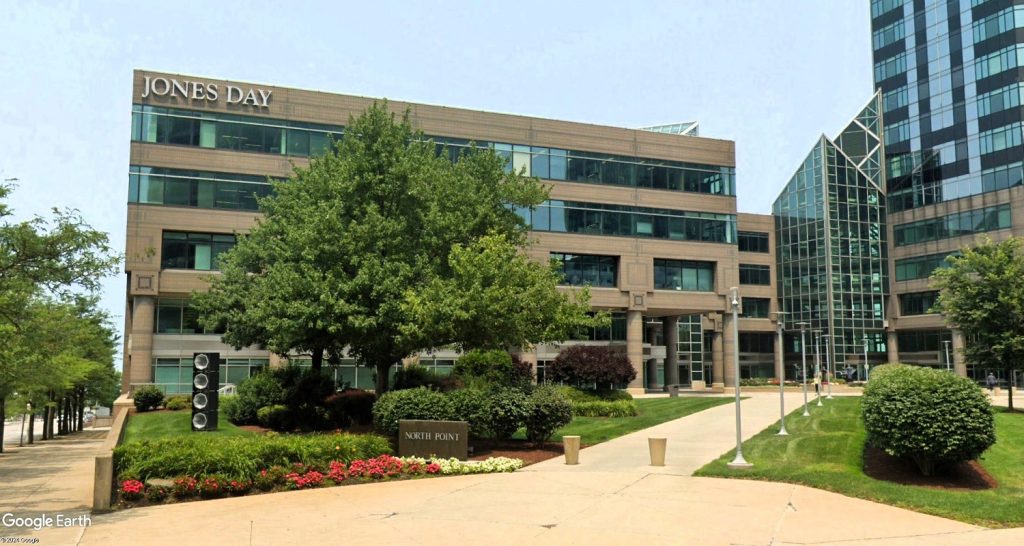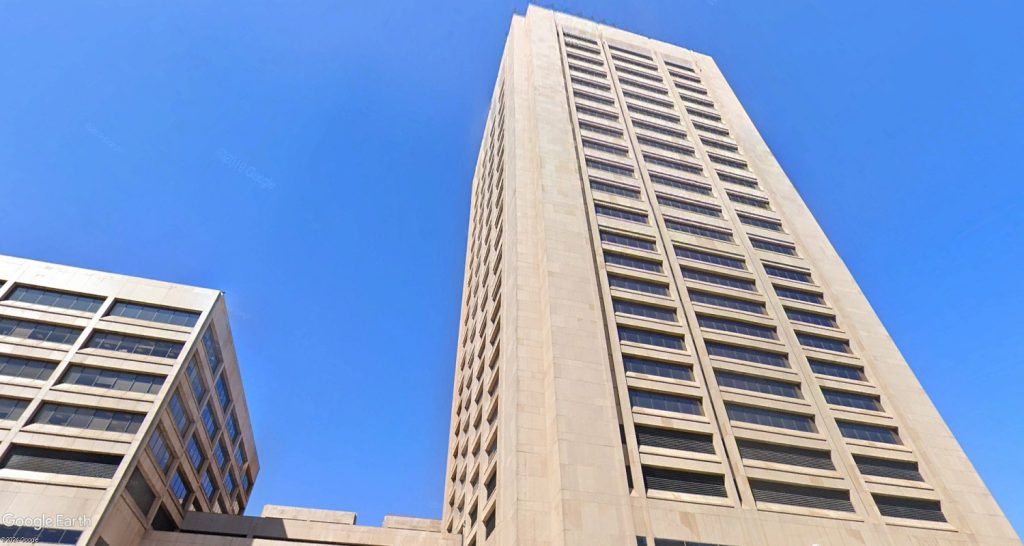Earlier this week, detailed design documents were submitted to the city as an important first step to securing construction permits for one of Cleveland’s largest-ever historic renovation projects.
The Centennial would convert a nearly 1.4-million-square-foot office building at 925 Euclid Ave. in downtown Cleveland into a what amounts to a self-contained town. It’s a 21-story, 257-foot-tall town where more than 1,000 people would call home and many hundreds more would work, dine and shop each day.
Submission of the plans by Sandvick Architects on behalf of developer Millennia Companies was intended to trigger a zoning review by the city’s building department. The zoning review is an important step toward gaining building permits to start renovation work. A spokesperson for the developer said it’s also another sign of the project moving forward.
“The application is an indication of progress – while moving forward, the timeline is not firm,” cautioned Valerie Jerome, director of marketing and communications at Cleveland-based Millennia.
Earlier this year, it was hoped that financing for the $500+ million project would close in the third quarter. The Centennial’s capital stack is a complicated one and heavily dependent on tax credits from multiple sources.
The resources will likely include non-competitive federal historic tax credits, a $25 million catalytic historic tax credit from the Ohio Historic Preservation Tax Credit Program, as well as Low Income Housing Tax Credits (LIHTC) through the Ohio Housing Finance Agency so all of the apartments could be offered as workforce housing. Milennia officials also confirmed they will seek a tax credit from the state’s new Transformational Mixed-Use Development (TMUD) program.
The financing may close in the fourth quarter of this year, Jerome said in an e-mail response to questions posed by NEOtrans. In a phone interview, Tom Mignogna, Millennia’s project manager on The Centennial, said the project will be pursued in one phase.
“It doesn’t make sense to do half the building and then go back do the other half, or pay twice for things like closing fees and attorneys fees,” Mignogna said. “We want to do the whole thing all at once over a 36-month time period. We’re getting incredible support from the city, county, state and federal governments. We also feel confident in our project receiving the maximum award from TMUD.”
While the Ohio Tax Credit Authority hasn’t issued its guidance for accepting TMUD applications, the law that created the TMUD program limits the largest award to any single project at $40 million. If The Centennial gets that, it would turn around and sell the tax credit for 90 cents on the dollar, bringing $36 million to the project.
Mignogna also said the state has committed a $5 million brownfield loan, there’s a $5 million loan from Cuyahoga County and a $15 million loan from the City of Cleveland. However, he would not discuss any financing that is from non-public sector sources.
Millennia has hired a joint venture of Marous Brothers and Gilbane Inc. as its general contractor for the project. Barber & Hoffman Inc. is the structural engineer. Denk Associates Inc. is the mechanical, electrical and plumbing engineer. Riverstone is the project’s civil engineer.
Submitted documents show the building will continue to be mixed use with retail and assembly uses but the predominate use will shift from office to residential. While there will be 62,022 square feet of offices in the building, nearly 1,000 people could soon call the 1924-built headquarters of the Union Trust Bank “home sweet home.”
Click here to take a virtual tour of the building.
“The existing building does not create a detrimental impact on neighboring properties in regards to height or density,” wrote Sandvick Architects in its application to the city. “The proposed use is less intense than the former use.”
Millennia, one of the nation’s largest owners of affordable housing units, is pursuing entirely affordable housing in The Centennial. According to plans submitted to the city, 868 apartments with more than 1,000 bedrooms are proposed. They would range in size from 576 to 1,551 square feet.
“We think that market-rate housing downtown has reached a bubble,” Mignogna said. “But affordable housing downtown has a lot of room left to run. We want to focus only on affordable.”
Also proposed are sensory-friendly apartments for residents with autism and accessible apartments for those with physical disabilities. The units will have rents priced for prospective residents who earn 50-80 percent of the area’s median income (AMI). Eighty percent of AMI for a family of four is $60,800, for example.
On the ground floor (as entered from Chester Avenue) as well as on the first floor (as entered from the higher-elevation Euclid Avenue), 21,978 square feet of retail is planned. Office spaces for several hundred workers are set on the first through third floors, primarily around the perimeter of a four-story-tall, L-shaped bank lobby that, when built, was the largest bank lobby in the world. It was also the second-largest office building in the USA, trailing only Chicago’s Merchandise Mart.
“The lobby has Corinthian columns, vaulted ceilings, skylights, and murals by Jules Guerin, a famous twentieth-century artist noted for the murals he created for the Lincoln Memorial in Washington, D.C.,” historian Jim Dubelko wrote for Cleveland State University’s Center For Public History.
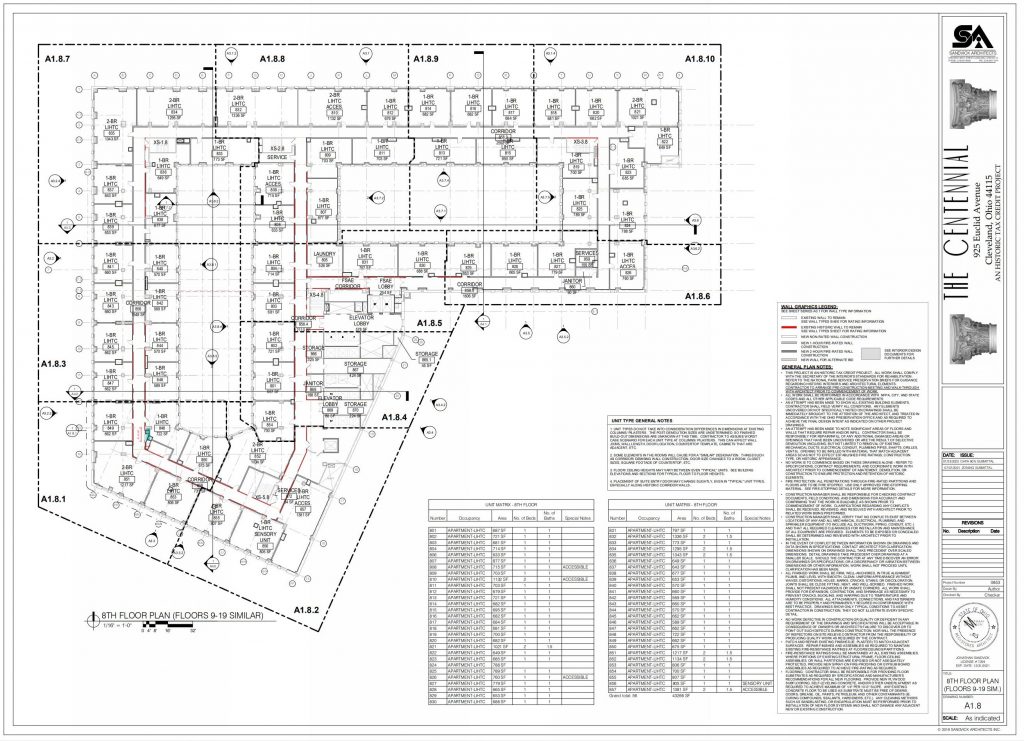
Proposed layouts are pretty consistent from the eighth floor to the 19th floor. These 11 floors were once all offices but are proposed to be residential (Sandvick).
That lobby will have two new uses, according to Sandvick’s plans. The banking hall along Chester Avenue is proposed to have a 16,607-square-foot museum, not including support offices. That museum is proposed to be called the Cleveland Exposition Center. It may feature items such as historic cars and aircraft from the Western Reserve Historical Society.
A 6,421-square-foot common area will connect the Chester banking hall to the shorter but equally glamorous banking hall along East 9th. The latter hall will become a 7,411-square-foot restaurant including two private dining rooms.
Look for that space to be filled by a new restaurant called the Century Club, to be created by Millennia founder and CEO Frank Sinito along with his wife Malisse. They have started and continue to operate several high-end restaurants in Greater Cleveland. They include LockKeepers in Valley View and the Marble Room in downtown Cleveland. The latter is located in another Gilded Age bank lobby, that of the former National City Bank.
Click here, then select “Record Info” and then “Attachments” to view detailed plans for The Centennial.
In those plans, the offices shown on the fourth floor were since changed to be residential because of the pandemic and its impacts on the office market. Mignogna said the project can succeed even if the office leasing is virtually non-existent.
On the 21st or top usable floor are a mix of proposed uses. There are a pair of three-bedroom, penthouse apartments but still would be priced as workforce housing. One would measure 1,383 square feet and another 1,551 square feet. There are several unassigned spaces on the 21st floor totaling 8,120 square feet plus an unoccupied 2,056-square-foot space.
“We have an idea for them but don’t want to release it yet,” Mignogna said.
But the notable feature on the 21st floor is a 5,032-square-foot indoor event space with kitchen plus private meeting rooms and a library. It was originally the Mid-Day Club from 1924 to 1990, then Sammy’s Metropolitan Ballroom, then the Metro Club. Plans show the assembly room would open up to an outdoor event space on the roof.
Additional building amenities are proposed to include a fitness center, lounge, bike storage, laundry room, community room, on-site management offices, mail room and parcel/locker room and wine cellar. Every residential unit is proposed to have a storage locker. All of the storage lockers would be on the fourth, fifth and sixth floors, mixed in with other uses.
The ground floor retail spaces include reusing a former arcade where Rickey C. Tanno Jewelers was located from 1949 to 2018. It was the last retail tenant to leave the building.
Plans also show the 5,255-square-foot former bank vault on the ground floor hasn’t found a proposed new use yet but could also be coordinated with the Century Club, Mignogna said. Another feature of the ground floor is that it will continue to be connected by a spacious, brightly lit pedestrian tunnel below Chester to a 1,100-space parking garage.
END

